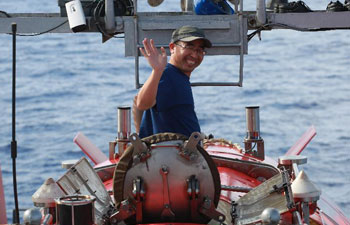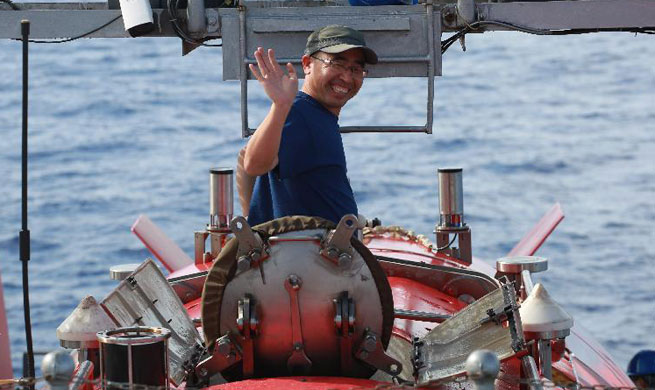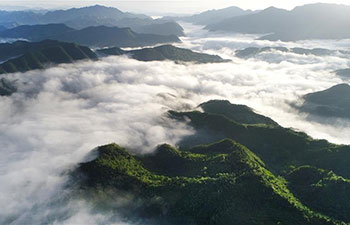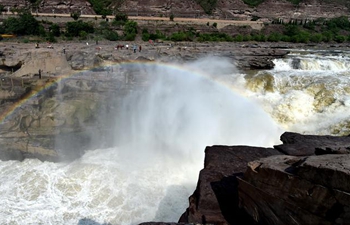by Peter Mertz
DENVER, the United States, May 23 (Xinhua) -- China is "driving and leading the world in renewable energy," Jon Creyts, an American energy expert, told Xinhua.
Creyts is Managing Director of Rock Mountain Institute, a think tank based in the U.S. state of Colorado that provides consulting services to governments worldwide on energy conservation issues.
Last week, China successfully extracted substantial quantities of the natural gas hydrate, or combustible ice -- a crystal comprising natural gas and water that is formed in low temperature and high pressure conditions under water.
The success made China the first country in the world to acquire such extracting techniques. U.S. experts believe this new type of fuel may be a solution to future energy problems.
"There was a lot of research on gas hydrate in the United States in the 1990s into the 2000s," said University of Colorado professor Ge Shemin.
Ge and other U.S. energy experts commended China for making the first step toward commercializing the use of combustible ice.
Methane gas, the main component of combustible ice, seeps from some 30,000 holes on ocean shelves ringing the earth's continents, providing more potential power than oil, coal, and natural gas put together, according to the British Geological Survey.
Thanks to the perfect conditions, low temperatures and high pressure under water, methane gas becomes a concentrated crystal that resembles ice, and is 165 times more powerful than the natural gas commonly used in household kitchens.
"The challenge is extracting them at a reasonable cost without doing environmental damage in the process," said Creyts, echoing the sentiment of many American scientists that production costs and environmental impact are the top two challenges facing China's revolutionary efforts.
"There is the potential if you start to extract that you could fluidize the shelf they're sitting on, and maybe shift the ocean floor," Creyts said.
"The failure of submarine slopes (underwater avalanches) has long been linked spatially to the occurrence of hydrate-or gas-charged sediments," the U.S. Geological Survey noted in an article published on its website.
On May 11, the U.S. Department of Energy, the National Oceanic and Atmospheric Administration and the British Geological Survey concluded an exploration of seafloor methane seeps on the northern U.S. Atlantic shelf, which will result in a soon-to-be-published report, Xinhua has learned.
In 2015, a drilling expedition staffed by scientists from India, Japan, and the United States discovered widespread fields of natural gas hydrate in the Bay of Bengal.
"It's also found in huge quantities beneath the Arctic Ocean," added Creyts.
Even with the ice's extraordinary energy output, Creyts said it might not be economically competitive in a decade as renewable energies are projected to increase tenfold across the Earth.
"One of the major problems that prevents gas hydrate to be developed as an energy source is that gas hydrate is only stable under high pressure; low temperature conditions, such as in underwater sediments," Ge noted.
Meanwhile, renewable energies are actually reducing global energy costs each year.
"Renewables are dropping global energy by 12 to 25 percent in overall costs per year," Creyts said, adding that methane "locked in ice" is a tenfold more than those contained in other conventional fossil fuels.
In addition to high expectations for combustible ice, experts also hailed China's two-pronged approach in energy development, which combines research and exploration of new types of fossil fuels such as combustible ice with continuous expansion of renewables such as wind and solar.
















